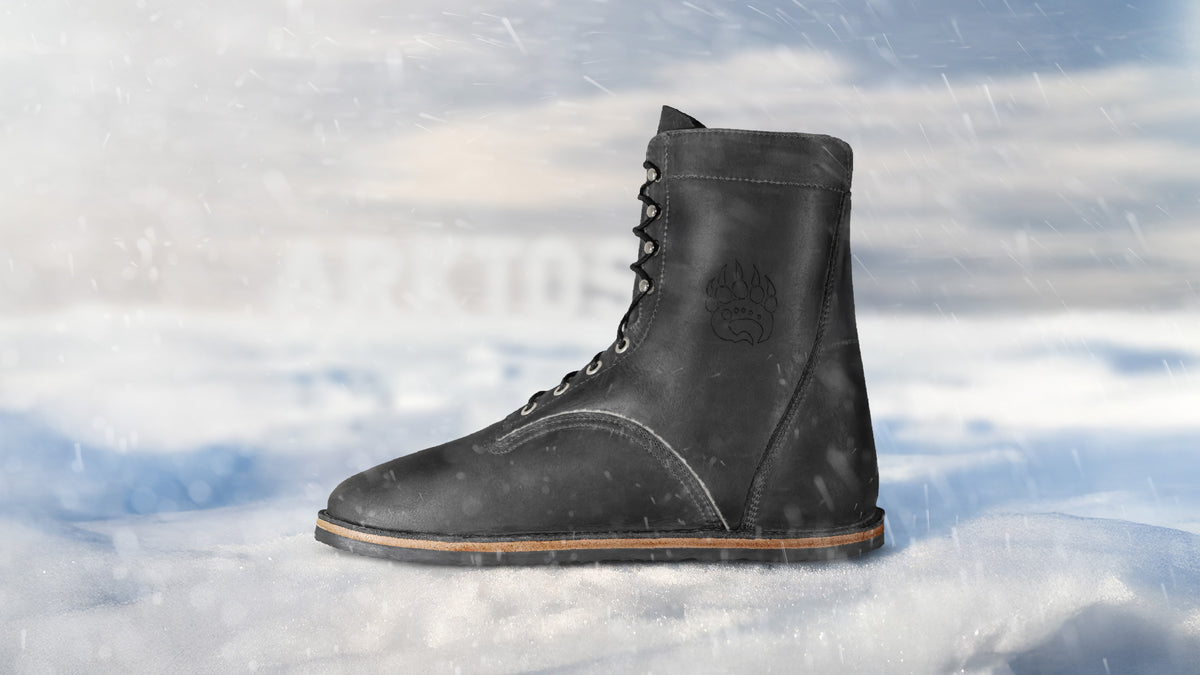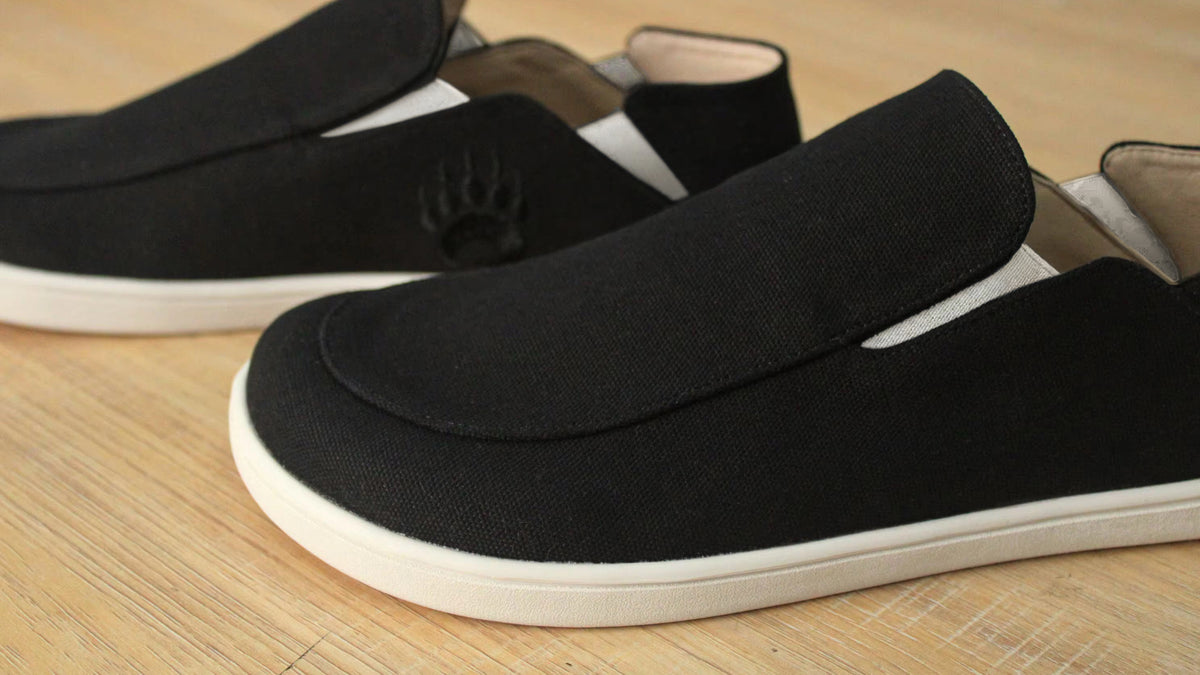You Hurt Your Foot or Ankle: Tips for a Better Recovery
Written by Lily Hoog-Fry, DC, RYT-E & John Baker, CSCS of SWELL Movement Longevity
We know how important your foot health is to not only your longevity, but your performance in the gym and in your life. Yet, we’ve all bumped or bruised or sprained our feet and ankles. It’s easy to do, especially with the lack of foot awareness many of us inherited from a lifetime in bulky shoes. Have you ever wondered what’s the best way to take care of foot injuries/ aches and pains?
So much of the classic advice out there on how to take care of injured feet (injuries in general, really) is outdated and focused on pure pain relief, and not on actual healing or optimizing long term foot function after an injury. Instead of relying on the antiquated RICE method – rest ice compression and elevation – we want to share with you the new MEAT method – movement, exercise, analgesia, treatment.
Basically, we wrote this to give you the advice we would tell our patients, clients, siblings, parents and kids when their feet or ankles hurt.
MOVE IT
The overarching principle of caring for your foot pain in an improved way is that gentle movement is medicinal. Instead of the ''rest it" advice we are all so used to, what we want to do is starting to move the injured area as soon as humanly possible without causing more pain.
Gently moving the injured tissue requires you to move in as big of ranges as you can without any sensation of pain (I know many of us are in the 'no pain no gain' camp, there is a time and a place for that mentality, this is not it… but we will get there).
To optimize your healing process, the general progression you want to follow is:
1) Pain Free Movement:
In acute injuries (e.g. there's still signs like redness, warmth and recent onset swelling) you want to keep any motion completely pain free. We’re talking 0/10 pain here (0 being no pain and 10 being the worst pain imaginable). Our goal here is to prevent weakening and tightening of the uninjured tissues, and make sure the injured tissue has the flow of healing nutrients it needs. During this stage we will utilize active range of motion (ROM) and isometrics.
When we do our active ROM, we want to use the muscles in your foot and calf to make fluid circles at the ankle. You'll want to start as small as you need to so that it isn't painful, which could literally be a 1 cm wide circle at first. Then you'll progress the range and you can add in other motions, such as drawing the alphabet with your toes.
When we do out isometrics we are going to actively push your foot into something (think into your hand, your other leg or the couch) in a way that doesn't hurt, and then hold. There's more muscle activation here than in active ROM, but less range so you can increase your tolerance to movement very incrementally and keep the uninjured surrounding tissues strong. Try this in multiple positions, and through the entire actue stage, before moving onto the next step.
2) Resisted or Loaded movement:
Once you're out of the acute stage there is healed tissue present at the previously injured site, and it is time to start loading the newly formed tissue. Scar tissue gets laid down get hapzardly, and without movement that tissue will not orient itself to the lines of tension in the surrounding tissue, resticting range of motion.
Start with very small loads (light bands, manual resistance with your hand, as well as body weight work), and a small range of motion (ROM). Slowly increase the load and the range over time to incrementally make your foot/ ankle stronger than before the injury. Here, we want to keep the pain below a 6/10 (this is where a controlled amount of pain is likely needed to stimulate proper structural healing). This is the 'exercise' part of the MEAT method.
In cases of tendinopathy, which is just a fancy word for tissue that is so weak for its imposed demands that it starts to breakdown or degenerate, you want to emphasize the eccentric part of the muscle contraction (where the muscle is getting longer as it is engaging, think of the lowering portion of a Calf Raise or Bicep Curl). Common conditions that fall into this category are achilles tendinopathy in which you have non acute pain at the bottom of the calf and plantar fasciitis (should be called fasciosis) where the pain is on the bottom of the foot near the heel. In these cases, it is really easy to think you should rest, which is actually one of the worst things to do as it perpetuates the weakness issue.
In summary, if the injury is minor, like a mild sprain or strain you'll want to start movement without any pain until you're out of the acute stage. But if your issue is something like the arch of the foot aches after a long day or more chronic degenerative conditions like plantar fasciitis or bunion pain, you often should start moving even with some pain, immediately. However, for more serious injuries like a broken bone, stress fracture or a severely sprained ankle may need to completely rest for a short period of time, but way less than you've been traditionally led to believe! If you're in that camp of a severe injury, make sure you're working with a great health care provider to strike the movement versus rest balance.
WHY YOU SHOULD MOVE IT
Why is movement the cornerstone of decreasing recovery time from conditions like ankle sprains and foot pains? There's 4 big reasons:
1) It increases blood flow and circulation of lymph by mechanical propulsion. The muscles are the strongest pump for our circulatory system. This circulation increases the effective processing and clearing of the inflammation byproducts in the area. (Not just masking the inflammation like ice/ many painkillers do, but we will get there) (1).
2) Loading and movement "accelerates healing of bone, fibrous tissue, and skeletal muscle" (2). Science has experimented with many complicated ways to increase healing times, like gene therapy and changing cell structure or communication, but nothing works as effectively as simply loading the injured tissues. It is a signal to your body that this tissue is valuable and needed, AND the only cost is a little bit of time.
3) Our muscles immediately start to atrophy, or break down, without movement because the circulatory system cannot provide enough nourishment or waste removal without muscle contraction to help. When we rest for too long, the injured tissue actually becomes less functional and more susceptible to injury in the future (3).
4) MOVEMENT is a pain reliever! This one is huge to understand, moving itself reduces our experience of pain (4). Again, for free!
PAIN MANAGEMENT, NOT WHAT YOU'VE BEEN TOLD
So, now that we know moving as much as possible, as early as possible is a good idea, how do we manage the pain to be able to move it without negatively affecting the healing process? Analgesia is the fancy doctor word for pain, and controlling pain enough to be able to move the area is the 'A' in the MEAT method.
Almost everyone, even many doctors, think to reach for ice, pain meds or elevation/ compression to help heal and decrease the experience of pain but actually none of these are supported by science (1).
Freezing Yourself, Maybe Not the Best Idea
Let's start with ice. So let's just start by saying the guy who originally promoted ice for injuries in 1978, literally took it back in 2015 (5). This is because ice constricts the blood vessels, which reduces the flow of blood and subsequently reduces the amount of oxygen in the area when there's ice on, but also after we take the ice off!
Not sure if you've heard, but oxygen is vital to the survival of our tissues, and icing can cause tissue death and permanent nerve damage (6).
With the reduced amount of blood flow there are reduced inflammatory particles, which seems like a good thing, right? Well, inflammation is how our body heals itself. So, no, when we ice an injury, we delay and prolong our ability to heal (1). Ice can be effective at reducing pain, however. So if that is your goal, ice away, but you may end up with pain and dysfunction for longer.
Anti-Inflammatories For Pain Reduction, Actually a Bad Deal
Next is pain control with anti-inflammatory medications. The evidence of why many pain meds should not be taken during an injury is the same as above, we don't want to inhibit the healing process. The medications that fall under this category are non-steroidal anti-inflammatory drugs (brand names Ibuprofen, Motrin, Aleve, or Advil). Tylenol may be a better option because it doesn't disrupt the healing inflammatory process but there's now evidence to support that natural remedies like high quantities of turmeric with black pepper, valerian root, comfrey root and magnesium may be just as effective (7). And because Tylenol toxicity is the most common reason for liver transplants in America, why not try other options first to manage the pain enough to be able to move? (8).
Should You Really Mask Your Pain, Anyways?
Side note here, there is no reason to treat the pain if you can bear it. If you can move your injured area a little bit, having access to the true level of your pain can help moderate your healing process. For example, if your ankle hurts really really bad, you aren't going to push it as hard, which is good because that's the actual stage of healing and structural integrity you are in. Not an artificially induced pain free experience that makes you think you can load tissues more than they are ready for.
This topic does get complicated because pain is an experience in our brain and doesn't correlate to actual tissue damage. So, make the choice with a healthcare provider that can account for all the variables in your specific situation.
To Elevate & Compress?
Now, for elevation and compression. Because there are very little side effects to these tactics, do it if you like it and believe it helps your pain. There isn't any evidence to support that it does help the healing process or pain experience in ankle or foot sprains, but there also isn't any evidence to support that it doesn't (1). However, muscle contraction is a much more effective way to move fluid so you might try things like calf pumping exercises, walking and light cross training first (9).
Lastly, the 'T' in the MEAT method is treatment. This means seeking out Chiropractic care, or physical therapy, that can help mobilize the joints and soft tissues around the injury to increase circulation, awareness and speed of recovery.
SUMMED UP
When you have an ankle or foot injury, instead of reaching for treatment options like the ice pack, elastic bandage for compression, nonsteroidal anti-inflammatory drugs or rest, keep up as much physical activity as you can. This will help you get back to healthy feet sooner and is the best way to prevent more ankle and foot problems down the road. And not sure about you, but we'd like to keep walking down all those roads we can.




























